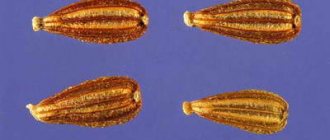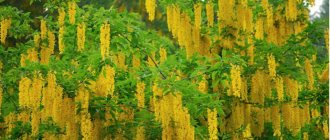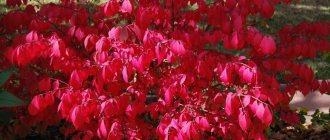Wood anemone is an open ground plant that grows in the shade of other trees. The flower is popularly called anemone, as the delicate petals react to a light blow of wind.
The forest anemone is a primrose that blooms with white flowers as soon as the snow melts, and its flowers on almost bare ground attract people's eyes. This plant can be found in the forests of the European continent, in Siberia and the foothills of the Caucasus.
The root mass resembles a carrot root, and it goes deep into the soil in search of moisture. In spring, openwork leaves appear from the root rosette on petioles up to 20 cm high. At the end of spring, beautiful snow-white flowers with a diameter of 7 cm bloom on tall peduncles. Sometimes there is a subspecies in which the reverse side of the petals is purple. The anemone blooms for about a month.
IMPORTANT! To prevent forest anemone bushes from growing too much, the flower bed with it must be limited.
Forest anemones: description with photos, use in landscape design
This type of anemone can decorate any flower bed. Pairs well with daffodils, tulips, hydrangea and lilac. Anemone looks beautiful when planted near low junipers.
Wood anemone is divided into two subgroups:
- Anemone oak forest (Anemone nemorosa). It grows in European oak forests, forming from its thickets a low green carpet up to 25 cm high. Flowering begins at the end of April and lasts for 3 weeks. At this time, white flowers with a diameter of 3 cm bloom.
- Anemone buttercup (Anemone ranunculoides). This variety of wood anemone blooms with yellow flowers for a week. The flowers are significantly smaller than the previous species, but also completely cover their bushes.
Appearance
Anemones are herbaceous perennials, rhizomatous or tuberous, with vertical branches from 30 cm to 80 cm in height.
The basal leaves are twice trifoliate or pinnately dissected on elongated petioles, collected in a rosette; the stem leaves are few in number.
Flowers with a circumference of 3-8 cm are single or less often grouped into a semi-umbrella inflorescence.
The colors of the petals are different - from white to soft pink, lilac, blue and scarlet. Many double and semi-double forms and varieties have been developed.
The fruits look like miniature nuts, naked in some species and pubescent in others, often adapted to be distributed by the wind, and occasionally by animals.
Most anemones are winter-hardy, tolerate cold well and practically do not freeze.
They are popular in landscape design, used for planting in rock gardens, mixborders, borders, and for decorating parks and home gardens.
Planting in open ground
Taking into account the characteristics of growth in the natural environment, the double wood anemone must be planted so that it quickly adapts and begins to grow. That is, the place should be protected from cold northern winds, should be in the shade, and moisture should not accumulate in the place where the anemone grows.
The location has been chosen, the next step is to prepare the soil for planting. If the site has poor soil, then in the fall, when digging, add manure, or in the spring, but only rotted manure or soil from the compost heap. The soil should be loose enough to allow oxygen to pass through to the root system of the bushes. Therefore, if the plot has black soil, then peat is added to the flowerbed to lighten the soil.
IMPORTANT! If the garden plot is often waterlogged, then a high bed with a good drainage base is arranged for the anemone bushes. In this case, the roots will not constantly get wet in melt or rain water.
Method of transplanting wood anemone:
- As soon as the green spouts of young shoots appear from the ground in the spring, the bush is dug out of the ground with a pitchfork and transferred to a new place of residence.
- A bush is placed in a hole dug according to the size of the root mass, soil is added, and it is well shed with warm water.
- After planting the bush, it should be well mulched with dry grass.
IMPORTANT! If the air temperature is high and the weather is sunny, then the planting should be shaded from the hot rays of the sun.
Bloom
The flowering time of spring anemones is late May or early June.
Summer ones bloom from mid-July, autumn ones delight with the variegated color of their petals from the end of August until the first frost.
Even small clumps of planted anemones attract attention.
Graceful long peduncles rise above the bushes, forming a light snow-white or variegated cloud of airy flowers of pink, lilac, crimson, blue, and violet.
Caring for anemone after flowering
Flowering lasts about two to three weeks, then the tops of the flowering stems are crowned with the resulting green boxes with seeds.
Flower growers try to cut them before they ripen, because self-seeding anemones are extremely aggressive towards other inhabitants of the flowerbed and the entire garden.
The plant quickly conquers space if its distribution is not limited.
When the need arises to collect seed, they try not to miss the moment of opening the boxes.
The fluffy lumps enveloping the seeds are instantly picked up by the wind and carried over considerable distances.
Care
In order for the plant to develop properly, it must be provided with proper care. The main criterion for care is timely watering with settled water and removal of weeds that clog the flower planting. The soil is also loosened after watering. This is done to remove the crust on the ground, which does not allow air to pass through to the anemone root mass. The plant is responsive to the application of complex fertilizers. But there is no need to overfeed the plant with it, since instead of beautiful flowers we can get just green mass without buds.
There is no need for pruning. After flowering, the bushes shed their leaves on their own, but they need to be watered throughout the summer season. Because in a severe drought the roots may die and then the bush will not be restored in the spring.
For the winter, it is not dug up and is only covered with spruce branches or foliage to protect the rhizome from freezing.
Spruce branches for shelter
Anemone transplant
Since the anemone grows in the area over time, it can crowd out other plants planted nearby. Transplanting anemone will help solve the problem.
It is best to carry out the procedure in the spring when the first shoots appear. Roots and adventitious buds are transferred to the required location. You can replant the anemone in September, but in this case the plant takes root less well.
It is not recommended to replant anemone too often, since the plant reacts sharply to such changes. The transplanted anemone may die.
Reproduction
Wood anemone can be propagated by seeds, or by dividing the bush when replanting. The first method is used quite rarely, since the seeds have low germination and varietal characteristics are not preserved. But self-seeding often occurs, and young bushes grow next to the mother plant. Here they can be planted without much damage to the adult plant.
Seeds
Cuttings are carried out in early spring, when the noses of future branches are just sprouting. The bush is dug up and shaken off the ground. After that, the sharp sector is divided into parts, which will have their own root system and growth buds. When spring propagation is carried out, 65% of the cuttings take root.
Disease and pest control
Mature plants are distinguished by excellent immunity and high resistance to most diseases. The situation with pests is somewhat worse. The plant is often attacked by leaf nematodes, and in wet summers the anemones are attacked by slugs.
Nematodes damage the leaves of the plant, causing dried spots of irregular shape to appear on them. Plants affected by the disease should be destroyed and the top 2 cm of soil replaced. Sometimes you have to resort to more extreme measures - transplanting all the plants to another area.
To repel slugs from the planting area, you should use standard methods: traps and barriers.
Medicinal properties
All types of anemone are very poisonous and the plant is not used for pharmacological purposes. But some people use it when preparing potions according to folk recipes. But at the same time, its toxicity is not taken into account. Therefore, before preparing decoctions, you should consult your doctor and only then begin treating your body using traditional methods.
The forest anemone is listed in the Red Book, since thanks to humans it is almost impossible to find it in the wild.
You can buy forest anemone at the city flower market or in relevant stores.
Anemone – photo
At first glance, anemone flowers are quite simple - a center and 5-6 petals. But how much this picture transforms when there are a lot of flowers!
Photo: 2sotki.ru
Photo: io-ann.livejournal.com
Photo: distano.ru
Photo: marusin-sad.com
Photo: pibig.info
Photo: rasfokus.ru
Photo: liveinternet.ru
Photo: wp.wiki-wiki.ru
Photo: botanichka.ru
Photo: mycoweb.ru
Photo: en.wikipedia.org
Photo: pixabay.com
Photo: pinterest.ru
Photo: ogorodnik.com
Photo: wallbox.ru
Photo: fotoload.ru
Photo: old.bgita.ru
Photo: pixabay.com
Photo: rolandsstaudengarten.de
Photo: m-sokolov.ru
Photo: zen.yandex.ru
Photo: joinn.com
Photo: pxhere.com
Photo: pixnio.com
Did you like the post? Subscribe to our channel in Yandex.Zen, it really helps us in our development!
Features of cultivation
They prefer changing light, so they will be happy to grow under the crown of a tree or in a moderately shaded corner of the garden. The best results can be achieved on evenly moist and abundantly fertilized neutral light soils. The accumulation of water is detrimental to it, and watering is done as needed, wetting the soil until the roots occur. In summer, fertilizing and mulching are recommended twice a month, but fresh manure cannot be applied. In winter, you will need shelter, especially if we are talking about crown or hybrid anemone.
They are planted, given their rapid growth next year in entire colonies. Therefore, it is better to give these flowers their own place in advance, where they will grow for several years, because these representatives of the flora react very poorly to transplantation.
If there is not much free territory, you can artificially limit the area of growth of the anemone by planting it in a pot without a bottom.
The origins of a delicate plant native to Ancient Greece
This quivering flower begins its history from Greece; legends that have survived to this day tell about it. One of these tales tells about the romantic love of the goddess Aphrodite for a mere mortal - Adonis. This young man won the heart of Aphrodite, but his passion for hunting frightened her. Leaving Cyprus, Aphrodite asked Adonis not to hunt without her. But Adonis, forgetting about her request, and carried away by the excitement, chased the boar. At that moment, his luck ran out and he himself became a victim of his prey. Upon arrival, Aphrodite discovered the body of her beloved. In desperation, she tried to revive the young man with her divine nectar, but it was all in vain, it was too late. For a long time, the goddess of love sat nearby and mourned Adonis. Later, in the place where she watered his body with nectar, flowers grew - anemones. Zeus was amazed by such strong love and ordered Hades, who ruled the kingdom of the dead, to release Adonis to earth. And since that time, every year, as a sign of memory of beautiful and pure love, from the onset of spring until autumn, the anemone blooms, delighting us with its beauty.
How to plant?
If you want to grow anemone on your site, then you first need to properly prepare it.
First of all, choose a place. Let’s immediately make a reservation that this should only be open ground, because due to the peculiarities of the root system, the plant will not be able to grow in a tub or pot. The planting site should not be in a draft; partial shade is also very important.
Experts recommend planting anemone in the shade of trees, where the sun's rays will fall scatteredly.
Forest anemone prefers soft, loose, well-aerated soils. However, it is unpretentious and can easily grow on sandy soils .
As neighbors for the crop, you can choose cherry, rowan, and sea buckthorn trees. The culture gets along well with buttercups.
The soil must be properly prepared before planting:
- in October the earth is dug up, fed with organic fertilizers;
- if the soil is heavy, loosen it well and then add a small amount of sand;
- acidic soils should be limed.
In addition, it is important for the gardener to ensure that there is no stagnation of water. To do this, the planting site must be “equipped” with drainage. These can be pebbles, broken bricks and other popular varieties.
How to properly care?
Anemone is a favorite flower among gardeners not only because of its beauty and sophistication. It is also very easy to care for, so it can be grown even by novice gardeners. Basic care includes several positions.
Watering
In the wild there can be different situations: both heavy rains and periods of prolonged drought. Anemone successfully copes with everything, but it is not advisable to experiment on the site.
And if most of the time the anemone receives water from precipitation, then during active growth and setting of buds it will be necessary to provide additional watering.
After watering, the soil should not be loosened: the root system of the plant is superficial, and you can easily damage it. All weeds are removed by hand. In addition, we should not forget that everything should be in moderation, so there is no need to flood the plants either. An abundance of water will lead to rotting and fungus formation.
Feeding
For the first year and a half, you don’t have to think about fertilizing at all: the forest anemone will get everything it needs from the soil itself. Then, as buds begin to form, you can apply liquid organic fertilizer . To do this, 1 kg of manure must be diluted in 10 liters of water (one bucket) and left for 7 days. After this, take a liter from the bucket and dilute it again to 10. You can water it, but you only need to pour it at the root.
Drop off point
Anemones, which are native to forests (Altai, flexible, oak forest, shady, Amur, etc.) bloom in early spring, and by the beginning of summer they have already stopped growing. They are shade-loving plants and prefer moderate temperatures and places hidden from the sun.
Flowers will successfully decorate the northern area of the house and will feel good under the canopy of the spreading crowns of garden trees.
In partial shade it is better to plant varieties that grow in forest glades in East Asia: hybrid anemone, forest anemone, forked anemone, Japanese anemone. The eastern side of the house or garden is very suitable for planting.
In the shade of cherry and plum trees, anemone will also feel good. In addition to partial shade, these varieties require protection from drafts and well-moistened soil. The flowering period for this group is shifted to summer-autumn.
Light-loving varieties include anemones from the Mediterranean region. Planting location: southern, well-lit parts of the garden. This group includes varieties: long-haired, tender, crowned, Apennine, daffodil, Caucasian, etc.
Soil moisture should be moderate, since this group easily copes with temporary drought, but does not tolerate stagnant water.
The soil
Depending on the variety, the soil preferences of the anemone may vary. However, absolutely all anemones require loose, well-fertilized soil with sufficient moisture. The most unpretentious plant is the forest anemone, which can grow in soils with low fertility.
Some varieties of the Mediterranean group (crown anemone, Apennine, Caucasian), as well as varieties with tuberous roots, grow better in alkaline soils (pH 7-8). To achieve this level of acidity, the soil is limed or sprinkled with ash, while simultaneously loosening the soil.
Other species prefer neutral and slightly acidic soil. But hybrid anemones, in addition to the looseness of the soil, require additional feeding with organic fertilizers (bird droppings or slaked manure), or the application of nitrogen and phosphorus fertilizers.











